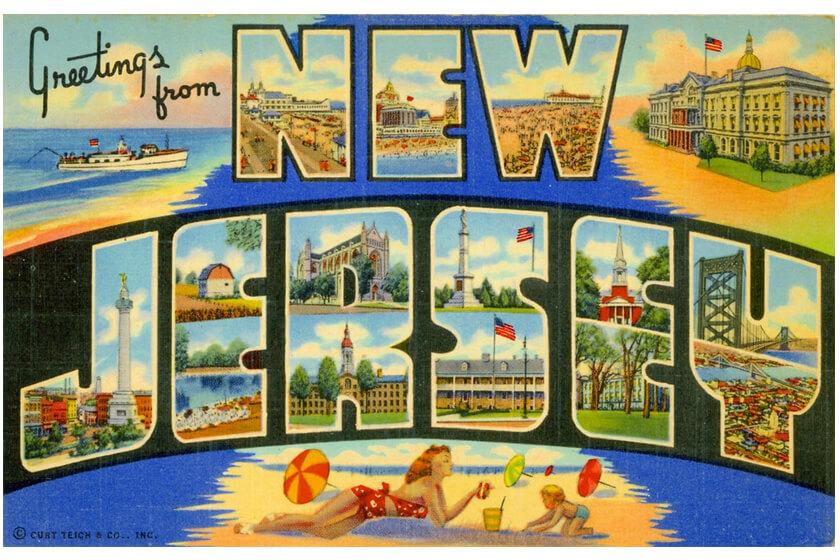West Long Branch, NJ – The New Jersey public’s view of their home state’s quality of life has increased compared to two years ago. However, this is due mainly to residents giving record high or near-record high ratings to their local communities. The Monmouth University Poll finds that opinion of the state as a whole, on the other hand, registers one of its lowest readings in 37 years.
Currently, nearly 6-in-10 New Jerseyans say the state is either an excellent (15%) or good (44%) place to call home, while 28% rate it as only fair and 13% as poor. This 59% positive rating is statistically similar to last year’s rating of 62%. However, it marks only the fourth time that this overall positive number has dipped below the 60% threshold in state opinion polls going back to 1980. The prior low was a 55% positive result just two years ago.
Monmouth’s exclusive Garden State Quality of Life Index score, on the other hand, now stands at +25, which is up from +18 in 2015. Over the past seven years, this index has ranged from a low of +18 (in 2014 and 2015) to a high of +30 (in 2012). Half of the index score comes from residents’ overall rating of the state as a place to live and the remaining half comes from four questions that ask residents to evaluate the quality of life in their local communities. This latter part of the formula is responsible for the boost in the total index score due to record or near-record ratings at the local level in the current poll.
More than 3-in-4 New Jerseyans rate their own town or city as excellent (37%) or good (40%) place to live. This overall 77% positive rating is a numerical high for this question going back to statewide polls dating from 1977. The prior high reading was 76% in both 2012 and 2011. The 37% number giving their town a top rating of “excellent” is also a high point for this metric, surpassing a 34% result from five years ago.
Another record high in the poll is the 71% of Garden State residents who say they feel very safe in their own neighborhoods at night. The prior high was 68% in 2011.
The current poll also registers a near-record high for ratings of local environmental quality at 76% positive – 37% excellent and 39% good. The record high point of 79% was reported in 2011, with other high readings being 77% in 2012 and 76% in 2014. However, the number who give environmental quality a top rating of “excellent” outpaces all prior polls since 1988, with the previous high being 33% in 2011.
Ratings for the job local schools are doing is also at a near record high of 65% positive – 26% excellent and 39% good. The only prior reading that was higher was 68% positive in 2012.
“New Jerseyans aren’t overly optimistic about the state as whole, so they seem to be turning to their local communities for reasons to value the Garden State as their home,” said Patrick Murray, director of the independent Monmouth University Polling Institute. “Anchoring themselves to their neighborhoods may help stem the tide of folks currently leaving the state, but I’m not sure this is sustainable in the long term.”
The Garden State Quality of Life Index score increased over the past two years among both men (+25, up from +18) and women (+24, up from +18). While it has also gone up among state residents age 35 to 54 (+26, up from +11) and age 55 and older (+30, up from +20), the index has actually gone down among those age 18 to 34 (+15, down from +25). The index has increased slightly among white residents (+32, up from +24) but has remained stable among black and Hispanic residents (+6, compared to +5 in 2015).
“Older, wealthier residents seem to be more rooted and more satisfied with their life in New Jersey. There is a warning sign for state officials, though. While the index has increased for most groups over the past two years, it has actually gone down among younger, and more mobile, adults,” said Murray.
Regionally, the highest quality of life index readings come from the central part of the state, including the Northern Shore (+35, up from +22 in 2015), Route 1 Corridor (+34, up from +22), and Central Hills (+33, down from +35). The index is somewhat lower in the Northeast region (+25, up from +21) and Delaware Valley (+22, up from +17). The greatest jump in the index came in the Urban Core region (+18, up from +4 in 2015). The lowest index reading comes from the Garden Core counties (+13, compared to +10 in 2015).
The Garden State Quality of Life Index was created by the Monmouth University Polling Institute to serve as a resident-based indicator of the quality of life offered by the state of New Jersey. The index is based on five separate poll questions: overall opinion of the state as a place to live – which contributes half the index score – and ratings of one’s hometown, the performance of local schools, the quality of the local environment, and feelings of safety in one’s own neighborhood. The index can potentially range from -100 to +100.
The Monmouth University Poll was conducted by telephone with 800 New Jersey adults from July 6 to 9, 2017. The total sample has a margin of error of +/- 3.5 percent. The poll was conducted by the Monmouth University Polling Institute in West Long Branch, N.J.
QUESTIONS AND RESULTS
(* Some rows may not add to 100% due to rounding.)
1. Overall, how would you rate New Jersey as a place to live – excellent, good, only fair, or poor?
15% Excellent
44% Good
28% Only Fair
13% Poor
0% (VOL) Don’t know
[Q2-21 previously released.]
22. How would you rate your town or city as a place to live –excellent, good, only fair, or poor?
37% Excellent
40% Good
16% Only Fair
7% Poor
0% (VOL) Don’t know
[QUESTIONS 23, 24 AND 25 WERE ROTATED]
23. How would you rate the quality of the environment in the area where you live –excellent, good, only fair, or poor?
37% Excellent
39% Good
14% Only Fair
8% Poor
1% (VOL) Don’t know
24. How would you rate the job your local schools are doing – excellent, good, only fair, or poor?
26% Excellent
39% Good
20% Only Fair
10% Poor
6% (VOL) Don’t know
25. How safe do you feel in your neighborhood at night – very safe, somewhat safe, or not at all safe?
71% Very Safe
22% Somewhat safe
6% Not at all safe
0% (VOL) Don’t know
[Note: All trend results prior to 2005 come from Rutgers University’s Eagleton Poll.]
[Q26-28 previously released.]
METHODOLOGY
The Monmouth University Poll was sponsored and conducted by the Monmouth University Polling Institute from July 6 to 9, 2017 with a random sample of 800 New Jersey adults age 18 and older, in English. This includes 493 contacted by a live interviewer on a landline telephone and 307 contacted by a live interviewer on a cell phone. Telephone numbers were selected through random digit dialing and landline respondents were selected with a modified Troldahl-Carter youngest adult household screen. Monmouth is responsible for all aspects of the survey design, data weighting and analysis. Final sample is weighted for region, age, education, gender and race based on US Census information. Data collection support provided by Braun Research (field) and SSI (RDD sample). For results based on this sample, one can say with 95% confidence that the error attributable to sampling has a maximum margin of plus or minus 3.5 percentage points (unadjusted for sample design). Sampling error can be larger for sub-groups (see table below). In addition to sampling error, one should bear in mind that question wording and practical difficulties in conducting surveys can introduce error or bias into the findings of opinion polls.
Region is defined by county boundaries: Northeast (Bergen, Passaic), Urban Core (Essex, Hudson), Route 1 Corridor (Mercer, Middlesex, Union), Central Hills (Hunterdon, Morris, Somerset), Northern Shore (Monmouth, Ocean), Delaware Valley (Burlington, Camden, Gloucester), and Garden Core (Atlantic, Cape May, Cumberland, Salem, Sussex, Warren).
The Monmouth University Polling Institute’s policy is to conduct surveys of all adult residents, including voters and non-voters, on issues that are of concern to the full public. Specific voter sample surveys are conducted when appropriate during election cycles.
Click on pdf file link below for full methodology and results by key demographic groups.




